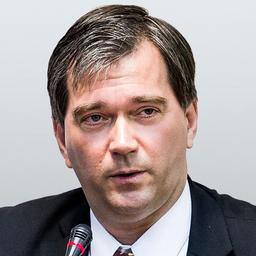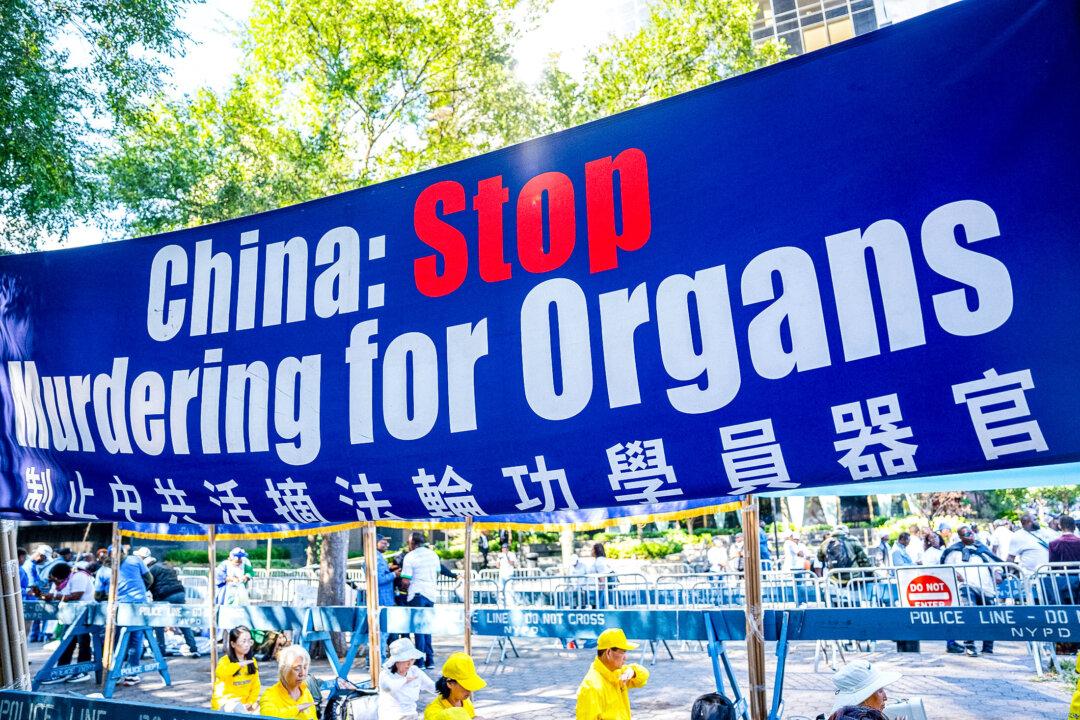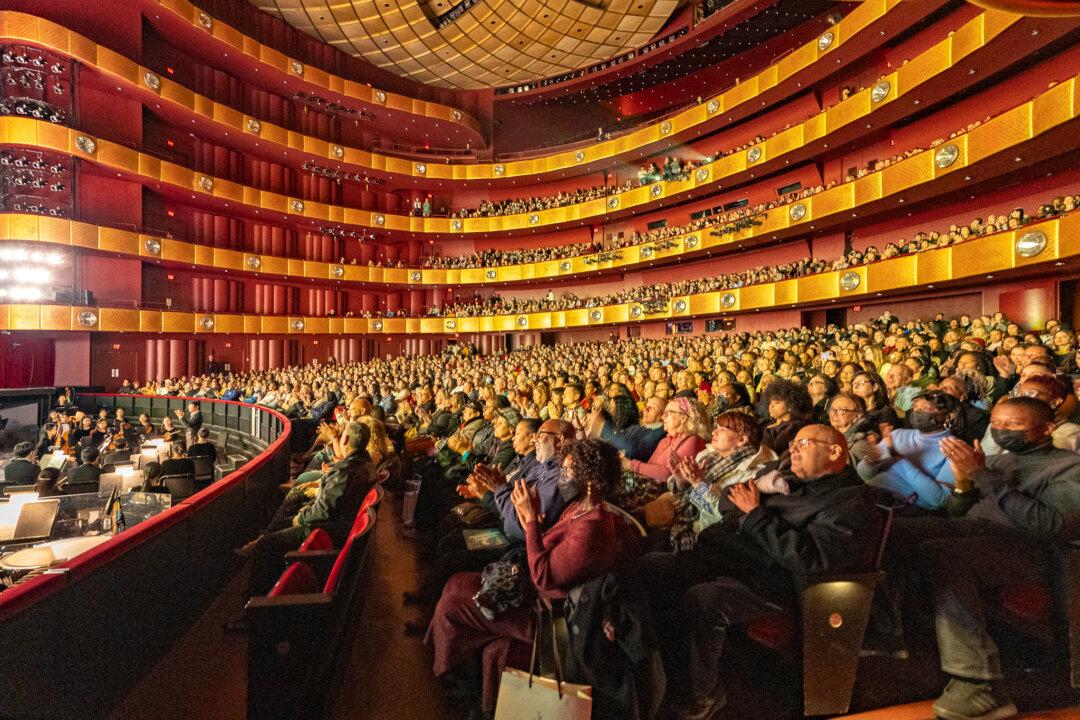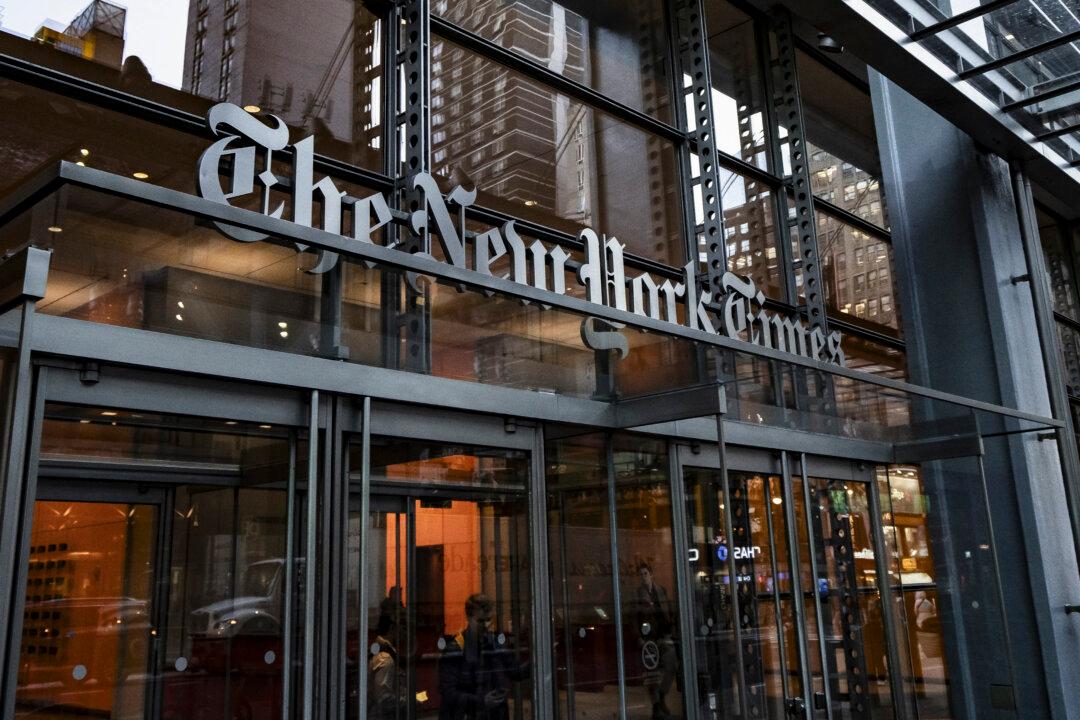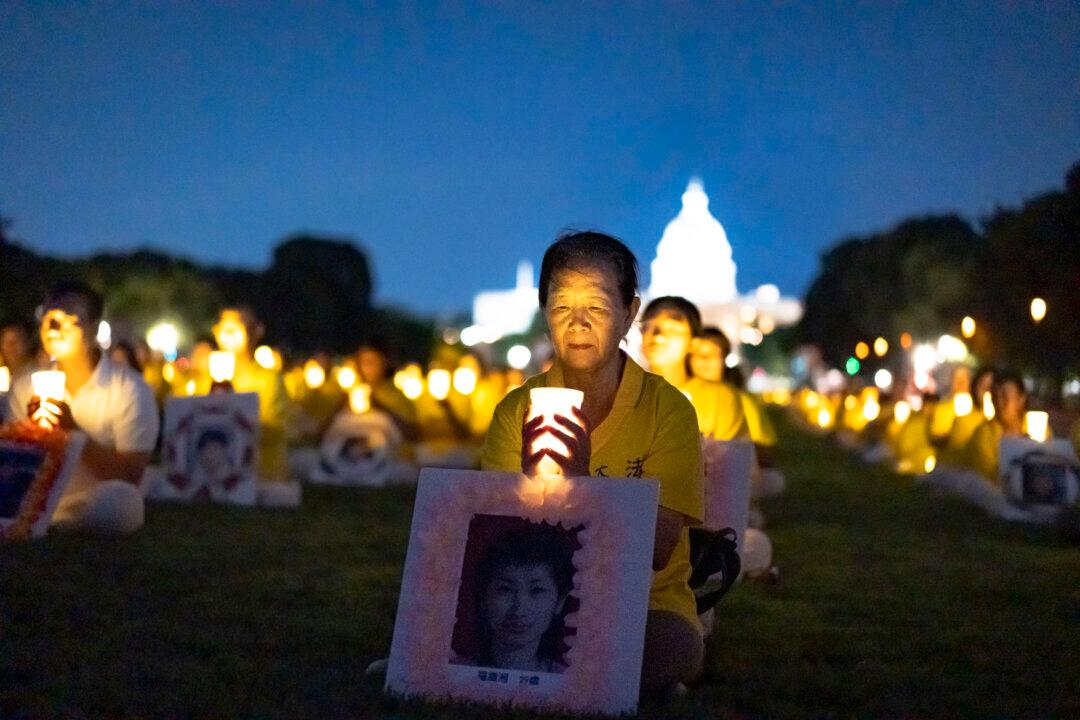The Scissor Strategy
On Feb. 4, 2022, during the Olympic Games in Beijing, the leaders of China and Russia signed a statement establishing a mutual “no-limits” partnership. Such partnerships among communist countries aren’t unusual. However, in this case, it’s a strategic partnership between two ambitious countries that are in the pursuit of power and global dominance.Twenty days after the Beijing meeting, Russia began to invade Ukraine, and the Chinese regime remained in the background: The “no-limits” partnership had taken on a shape. While one partner invades a sovereign country, the other partner supports quietly by keeping the supply channels open. We might not be aware, but what we’re witnessing is an example of the “scissor strategy,” not unusual among communist countries.
When departing from a summit between these two governments in Moscow on March 21, Chinese leader Xi Jinping told President Vladimir Putin: “Now there are changes that haven’t happened in 100 years. When we are together, we drive these changes.”
Russia and China
We need to take a closer look at the “no-limits” partnership between these two authoritarian countries as they build up their grip on power. Each of them has weaknesses and strengths. While Russia has oil and a large arsenal of missiles, China has a large economy and is a master of deception. While Russia invades Ukraine, China creates the perception that it could be a potential mediator in the conflict.Scissors operate through a kind of job sharing: One blade does the cutting, while the other blade stays still. Currently, the job sharing between the two countries is assigning the active military part to Russia, while China is keeping its appearance as a passive power. Under communism, state propaganda is first of all “perception management,” and China wants to be perceived as a peaceful country, worthy of being internationally accepted as a world leader. Attacking Taiwan militarily could jeopardize that image.
Moreover, if things go wrong in Ukraine, China can opt out without being blamed. A Chinese proverb comes to mind: “Hide the hand that threw the stone behind your back.” The Chinese Communist Party (CCP) feels historically most comfortable in a configuration that has a safe backup plan. The CCP operates best when it isn’t under scrutiny; it’s a master of deception.
Why is it so important to understand the “scissor strategy”? Because it’s a typical stealth maneuver by communist bloc countries against the free world. Communist countries can easily collaborate because they find a common enemy in free-market countries. In contrast, free countries fall short in a unified response against communism, and like a sheep that has left the flock, they become more vulnerable and easy prey. The “scissor strategy” is a modern variation of “divide and conquer.”
What can be done? The classic kids’ game of “rock, paper, scissors” captures it quite well. If one is weak like paper, the scissors win, but if one is a rock, the scissors lose. The latter occurred during the Trump administration when Russia didn’t invade any countries and trade tariffs stifled China’s exports. Under the current U.S. administration, we instead find the character of paper, which equates to an invitation to the communist scissors to cut into Ukraine, possibly even Taiwan.
The Deception Protocol of the CCP
As mentioned previously, the CCP is a master of deception. When the CCP expanded the above-ground concentration camps in Xinjiang, it wanted to be caught by satellites. When Uyghur detainees waited to be loaded onto train cars, the Chinese authorities wanted photos to be leaked. But, for more than 20 years, China has been doing everything it can to hide the detention camps where Falun Gong practitioners are detained, tortured, or have their organs forcibly harvested—because the Chinese regime doesn’t want to be caught in its “cold genocide” against Falun Gong.The Chinese regime doesn’t mind being caught committing general human rights violations, but it can’t risk being caught in its persecution of Falun Gong. The CCP fears that the rest of the world would be united against the Party if people learned about Falun Gong’s noble principles of truthfulness, compassion, and tolerance, principles that are in juxtaposition to the communist ideology of class struggle.
In order to deprive the global community of learning about the good and peaceful principles of Falun Gong, the CCP puts the highest priority on silencing Falun Gong, including its potential advocate, the leader of the free world, the United States of America.
China and the WHO
The WHO is a transnational body that has no constituency and its leaders aren’t elected by the people. In recent years, the business model of the WHO has changed. It has become a branch of the United Nations that depends largely on private funding. Former Director-General Margaret Chan stated that 70 percent of the budget is privately funded. Among the top donors are billionaires, the pharmaceutical industry, and the People’s Republic of China. The typical donors come with demands and expect the WHO to implement specific measures.This creates conflicts of interest for the WHO. While we imagine the WHO to be a selfless servant to the global population, the money trail suggests otherwise.
It’s no secret that China has a direct line to the current WHO director general. Not only did China help in the election process of the current director-general, but also past connections to communist parties create common ground. The photo of a handshake between the director-general and Xi reveals who’s in charge. China has hijacked the WHO and is using this transnational body as a weapon in its proxy war against the United States.

A brief excursion to discuss the beginning of the COVID-19 pandemic might give us some clues. After China observed the outbreak of the virus, it triggered the lockdown of Wuhan city in mid-January 2020, while assuring the global community that international travel would be safe and has to stay open.
This provokes an unusual question: Was the COVID-19 outbreak in Wuhan just an accident or was it a sacrificial pawn?
In chess, it would be a no-brainer to sacrifice a city of 5 million residents in a country of 1.4 billion people if that could win the game. Even causing a pandemic would be a legitimate move if this is what it takes to change the game on the board. If true, what was the goal? The pandemic made the WHO think about measures to prevent the next pandemic. What followed was the introduction of a pandemic prevention treaty that would impose massive restrictions on free countries.
Legal Concerns
Currently, the WHO is preparing two major documents with far-reaching consequences: the amendments to the International Health Regulations, IHR (2005) and the pandemic prevention treaty. Scholars in the legal field have pointed out that these two documents carry several problems. The passing of both policies appears to be rushed. What usually would take several years is now being squeezed into a few months. Given the rushed procedure and the almost simultaneous vote, one needs to assess these two documents as one measure and not separately—otherwise, one might miss seeing the two documents as the two blades of a pair of scissors.According to legal experts, one could infer that the documents appear premature since they lack critical definitions. The regulations say how health emergencies are declared, but they don’t provide definitions for when the end of a health emergency should be announced. Without defining the end, health emergencies can last for decades, and there’s no process in place for how a member state could demand an end.
The gaps in the definitions encompass other problems: The amendments don’t provide any mechanism to appeal. In other words, the WHO policies promote a model in the style of authoritarian systems, where those who dissent have no place to go. In our legal system, we’re used to having courts of appeal to seek a second opinion. We can voice our dissent before a mayor, city council, Congress, or the Supreme Court. All of that is impossible under the new WHO regulations, because the definitions don’t address those options.
Legal problems further include that there’s no definition for the degree of severity, so even a flu could be declared a pandemic. There’s no definition regarding how to declare the end of a pandemic nor when the measures against it have to end; in other words, we can face an endless period of pandemics, with endless opportunities for pharmaceutical companies to push one vaccine after the other.
It remains completely in the hands of the WHO’s director-general to determine the beginning and end of a pandemic, while at the same time, there’s no mechanism that would hold the director-general accountable for his decisions and measures.
Another aspect is important and needs to be discussed: The amendments to the IRH (2005) include the power to define and control disinformation. This is a risky measure. If the decision-making power over what is (true) information and disinformation lies only in the hands of the WHO staff, then open scientific dialogue is in jeopardy, and classifying a statement as disinformation becomes censorship: Censorship runs counter to freedom of speech. Among all the member states of the WHO, the United States is among those few countries that have written freedom of speech into law, into the Constitution.
The power to control disinformation isn’t aimed at totalitarian countries but aimed at free nations, and this might give another hint that the specific content of the new IHR amendments and the pandemic prevention treaty is aimed at securing a power structure rather than serving the health of the people.
Why would the WHO strive for centralized control over medical doctors who participate in a broad scientific dialogue? One would assume that the WHO’s efforts to secure clean water in certain countries would save more lives than stopping medical doctors from sharing their medical knowledge and wisdom.

